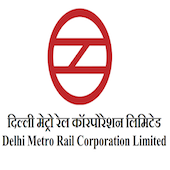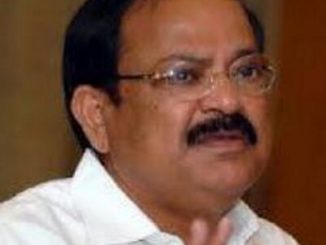
377 million Indians, comprising about 31 per cent of the country’s population, live in urban areas (Census 2011). Even though in percentage terms the urbanization level appears to be relatively low, the sheer volume of the urban population is enormous.Today India’s urban population is more than the entire population of a country like United States of America or Brazil.The urbanization level in India is set to further increase and the urban population is estimated to reach about 600 million by 2030.
The urbanisation process brings with it economic, social and environmental transformation. With economic growth, rising disposable incomes and growing aspirational needs of people, increase in personal motor ownership is a natural phenomenon experienced world over. The sprawling of cities away from city centres to suburbs further increases ownership and usage of auto mobiles. All these new vehicles congest the existing roads and lead to traffic jams, increased noise and air pollution and pose safety hazards for people particularly children and old aged persons. To ease the situation, city governments try to augment infrastructure by building more roads, widening the existing ones, providing more flyovers, providing more parking spaces and so on. The added infrastructure provides some relief in the short run, but in the longer run new cars, SUVs and two wheelers fill up the extra capacity and congestion level now further increases with traffic jams sometimes running into hours. In cities like Bengaluru, situation has reached such alarming levels that citizens are spending over 3 to 4 hours a day commuting between home and work. The situation in Delhi is similar.
What these cities didn’t realize was that they can’t build their way out of congestion!
This myth is broken today and with worldwide experience in countries like Korea, USA and China it is well established that you can’t solve the congestion and associated air pollution problem just by increasing the supply of road infrastructure. It is like trying to solve obesity problem by increasing the waist size of the trousers. To effectively address congestion, you also need to effectively manage the demand side i.e. reduce the need for travel, reduce the length of travel, promote use of bicycle and public transport over private motor vehicle etc. Delhi tried to address the demand side temporarily to some extent recently by going for odd-even formula.
The focus thus needs to shift from increasing supply to managing demand; from vehicles to people; and and from transportation to mobility;
The objective of all planning should be to make cities more people centric and liveable.
In fact in urban areas, efficient, reliable and affordable mobility options are important from equity perspective also so as to ensure easy access for all citizens to work places, schools and other facilities. Lack of proper mobility can make cities non-inclusive as the poor and vulnerable sections would not be able to access the jobs and would be deprived from economic activities.
A recent article in Live Mint (based on census 2011 data) about how people in top 53 cities in India commute, brings out that public transport is a failure and less than 20% of the workers use it in 33 of these 53 cities, the two exceptions being Greater Mumbai region and Kerala cities where this percentage is between 35% to 45%. Only 25% to 33% people use personal motor vehicles but this receives most of the attention. Surprisingly, in 38 cities, over 30% people go to work on foot or bicycle, but the non motorized infrastructure is most neglected and receives negligible investment, exposing the pedestrians and cyclists to risks of road fatalities.
Thus if our cities have to become highly liveable places they would need to give more importance to providing adequate walking & cycling infrastructure and high quality affordable public transport to connect people to jobs, schools, amenities and facilities.
The focus thus has to be on non motorized and public transport
Somehow, in the past focus has been mostly on moving vehicles and not on moving people and this needs a quick course correction. National Urban Transport Policy introduced in 2006 has tried to shift the focus from moving vehicles to moving people, but lot more sustained efforts would be required over a long period of time (next 10 to 20 years) to really translate this policy into action in the cities by embedding sustainable urban transport solutions in city development plans and projects.
Sustainability needs to be embedded as a strategic element in all our urban transportation solutions.
Recently it is observed that to deal with congestion and to provide public transportation facilities, many medium sized cities are panning to go for Metro Rail transit system solution. Metro Rail is a good solution if we have to move large volumes of people (around 20,000 persons in peak hour per direction (PHPDT)) over long trip lengths. However if the volumes are low and trip lengths short, metro rail may prove to be very expensive and non-viable solution. A more important issue is that planning for metro rail projects appears to be coming up more as an afterthought like an antibiotic solution to give relief from the pain from extreme congestion rather than as a part of a well thought out phased multi-modal transportation plan integrated with the city master plan.
There is a need for cities to plan more pro-actively and long term and develop multi-modal integrated sustainable urban transport solutions comprising a mix of good pedestrian footpath, cycling tracks and parking infrastructure, city bus systems, BRTs and Trams in a phased manner rather than skipping these intermediate economic solutions and directly jumping to relatively more expensive solutions like Metro Rail Transit
Further, the cities would need to involve the citizens in the planning process to really understand what the people want, and the third tier of government i.e. the Urban Local Bodies would need to have full functional and financial autonomy and would have to assume the leadership role in planning the city’s future as envisaged in the 74th Constitutional Amendment. The 100 Smart Cities Mission where the competing cities have prepared their smart cities proposals with citizen feedback is a step in this direction and it is not surprising that sustainable urban transport solutions form a significant proportion (approx 25% value) of the total city plans. As per analysis of National Institute of Urban Affairs (NIUA), out of roughly Rs 50,000 crore investment envisaged for the 20 selected light house smart cities, about Rs 12,000 crore is estimated for 214 integrated mobility projects for bicycle infrastructure – bike tracks, bike sharing, bike parking etc, pedestrian infrastructure, bus based public transport, bus related ICT/ITS, clean fuel, inter-modal hubs, transit integration etc.
Today one of the major issues being faced by many of the states and cities, particularly the small and medium sized cities in planning and implementing such smart and sustainable integrated urban transport solutions is the lack of sufficient institutional as well as individual capacities. These cities need to build sufficient capacities to plan and implement integrated sustainable urban transport systems which should facilitate more of walking, cycling and travel by public transport rather than personal motor vehicle and para-transit transport usage prevalent today.
It is important to catch these small and medium cities early so that they can evolve into more liveable urban spaces as they grow.
At NITI we have identified developing capacities in small and medium sized cities to plan smart and sustainable well integrated urban transport solutions as a key focus area and are working with the States and international & national experts and knowledge bodies to build such capacities in the implementing agencies.
The choices we make today would decide the fate of our cities and citizens tomorrow!
About the author: Shri Jeetendra Singh is presently with the National Institution for Transforming India (NITI
Aayog), Managing Urbanisation and part of Team India Hub.  A VRCE and IIMC passout, he is a National Award winner for Outstanding Service in Indian Railways where he has served for 19 yrs ,then with Planning Commission and presently with Niti Aayog. Causes of Economic Empowerment, Environment and Poverty Alleviation are close to his heart. @jeetendrasingh1
A VRCE and IIMC passout, he is a National Award winner for Outstanding Service in Indian Railways where he has served for 19 yrs ,then with Planning Commission and presently with Niti Aayog. Causes of Economic Empowerment, Environment and Poverty Alleviation are close to his heart. @jeetendrasingh1







Leave a Reply
You must be logged in to post a comment.